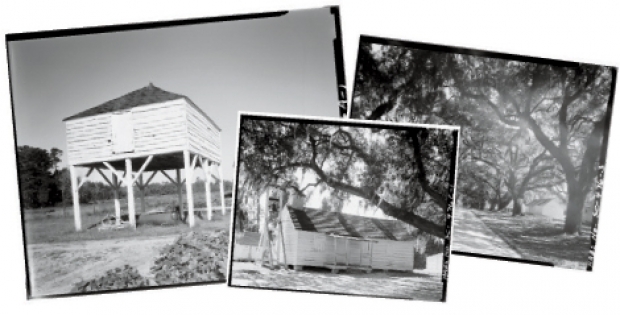Mansfield Plantation’s owners safeguard its history and future

During the heyday of planters in the Lowcountry during the mid-nineteenth century, when rice was king, many family lands boasted a winding drive shaded by an oak alley, a grand main house, and acres of forest. In the twenty-first century, however, there are but a handful that have survived war, hurricanes, and rampant development. What’s more, there are even fewer possessed by a descendant of an original owner.
Just outside Georgetown stands a nearly 1,000-acre former plantation that—after a 92-year gap—has again come into the hands of an original family member. As of 2004, Mansfield Plantation, an expanse of woodlands and former rice fields, has returned to the family, namely John and Sallie Parker.
The origins of this homeplace begin with John Green, who attained the initial 500 acres through a land grant in 1718. It was later owned by Susannah Man, who made a good living in rice planting, selling sixty barrels to a merchant in Georgetown in 1776. Man increased her holdings and brought the plot to 760 acres, naming the property after her late husband, Dr. John Man.
From generation to generation, the estate stayed in the family, passing from parent to child and sometimes between siblings. Under the oversight of Dr. Francis Simons Parker and with the labor of more than 100 slaves, the plantation produced more than a million pounds of rice in 1860.
Multiple generations lived on the land; however, after the Civil War, the rice boom was over, strong hurricanes had devastated agriculture, and slave labor was long gone. Mansfield Plantation heirs were forced to sell in 1912. Over the next few decades, the homeplace was owned by New Yorkers and Pennsylvanians, underwent an extensive restoration, and was saved from development in the 1970s by Columbia resident Wilbur S. Smith.
Enter John Parker, great-great grandson of Dr. Francis Parker, on water skis. Following an impromptu visit to Mansfield while enjoying a bit of outdoor recreation with high school friends in 1964, John explored the plantation that he had heard about through a caregiver who was born at Mansfield. He knew it was once owned by his ancestors and resolved to one day bring it back into the family. The opportunity came in 2004, and John resumed family ownership (and a bed-and-breakfast business) after ninety-two years.
John and his wife, Sallie, descendents of a signer of the South Carolina Ordinance of Secession and signer of the Declaration of Independence, respectively, have not ignored the rich—and painful—history of Mansfield Plantation. Still standing on the property are several slave cabins, the only rice-winnowing shed left in the state, and a rice-mill chimney. Though the pace of life on the plantation is relaxed, the couple is painstakingly restoring these original structures and others to preserve the history of plantation life.
With the restoration of the plantation’s 200-year-old slave chapel complete, work is now in progress to restore the second of six cabins to turn into a museum for myriad artifacts, from tools to Civil War–era uniform buttons and British naval buttons that have been discovered on the property. The new museum is set to be ready for visitors in November, says John.
Also in the works is a careful cleaning of the plantation cemetery, thanks to the efforts of volunteers from a local high school. Parker says he has plans to restore the schoolhouse as well (built to accommodate Mary and Francis Parker’s nine children). Owning the plantation over the last seven years is “like a dream come true,” says John. “We want to be good stewards like our family before us,” he adds.
With plans for a future land-conservation easement and the continued protection of the existing structures, John and Sallie Parker are earning their good-steward status—not only preserving the plantation’s extensive history, but the land itself.